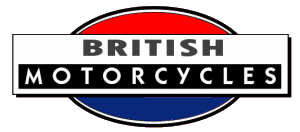


1891 Anthony George New and Arthur James Mayne formed a partnership as electrical and general engineers, Westminster, with works at Woking
1896 The firm of New and Mayne was converted to a limited company
1896 Trials of motor cycle at Catford
1897 May. Details of an electric motor brake.
1897 The firm gave up electrical contracting to concentrate on horseless carriages; A. J. Mayne retired from the firm.
1897 July. Employing around 80 people in manufacturing, but had not yet completed any cars. Orders were on-hand.
1897 MESSRS. NEW AND MAYNE (LIMITED)
This firm has long been known for excellent workmanship, combined with enterprise in adapting themselves to any new thing which may come forward. It is, therefore, by no means surprising to outsiders to find that they are in the very front rank of motor-carriage holders - while to those who know how keenly the members of the firm have followed the introduction of automotors into this country it seems only in the "eternal fitness of things" that they should take a foremost place in catering for an appetite which they have done much to create.
In order to standardise work the under-frames of the carriages are made to the firm's patterns, and with these as a foundation any modifications or additions can easily be made to suit the convenience of the customers. We have examined some of these frames, and unquestionably great care has been taken in designing all the parts in order that the stresses shall be properly distributed, and sufficient motive power has been allowed to negotiate the steepest hills. All the carriages run at 12 and 4.5 miles an hour, the latter speed being obtainable without reducing the speed of the motor. The hand-wheels, levers of brakes, are placed in positions readily accessible by the driver of the carriage, and vibration is guarded against by the employment of powerful springs between the under-framing and the carriage lauds.
The Rickshaw and dog-cart patterns have three wheels, the single front wheel being employed for steering. All the other carriages have four wheels, and steering is effected by the hind axle and turntable.
The front axle carries the motor, reduction and differential gearing, and the driving road wheels. It will be seen from the above that the motor-cars are pulled along by the front wheels, an arrangement which gives several important advantages over vehicles which are pushed along.
In order to keep the weight down an aluminium alloy is used wherever possible. The oil engines employed run at a high speed, and are fitted with special spray and exhaust valves, and ignition arrangements, which they have been at great expense to work out. They work with the ordinary Tea Rose or Daylight Oils, and a gallon, costing about 7d., is sufficient to propel the lighter vehicles at a speed of 12 miles an hour for several hours.
The electrically-driven carriages, which are got out to the designs of Mr. E Kilburn Scott, have the accumulators suspended from a very strong under-framing between the front and hind axles, thus keeping the centre of gravity low down and enabling the box containing the cells to be unshipped in a few minutes. Springs are interposed between the accumulator box and the under-frame. The motors are specially designed for lightness and accessibility, and are suspended on riding springs in the same way as the motors used for tramcars. Each motor is completely enclosed, but the commutator and brushes can be readily inspected. The brushes are built up of carbon and copper, and special arrangements are made for anulling the lead. A char-a-banc to carry 22 persons is being made, and designs for electric omnibuses are in hand.
Messrs. New and Mayne usually employ the I. E. S. Accumulator Co's special traction or A cells, as they have found that they withstand vibration and heavy discharges very successfully.
Source: Graces Guide
If you have further information or a query related to this page, please contact us